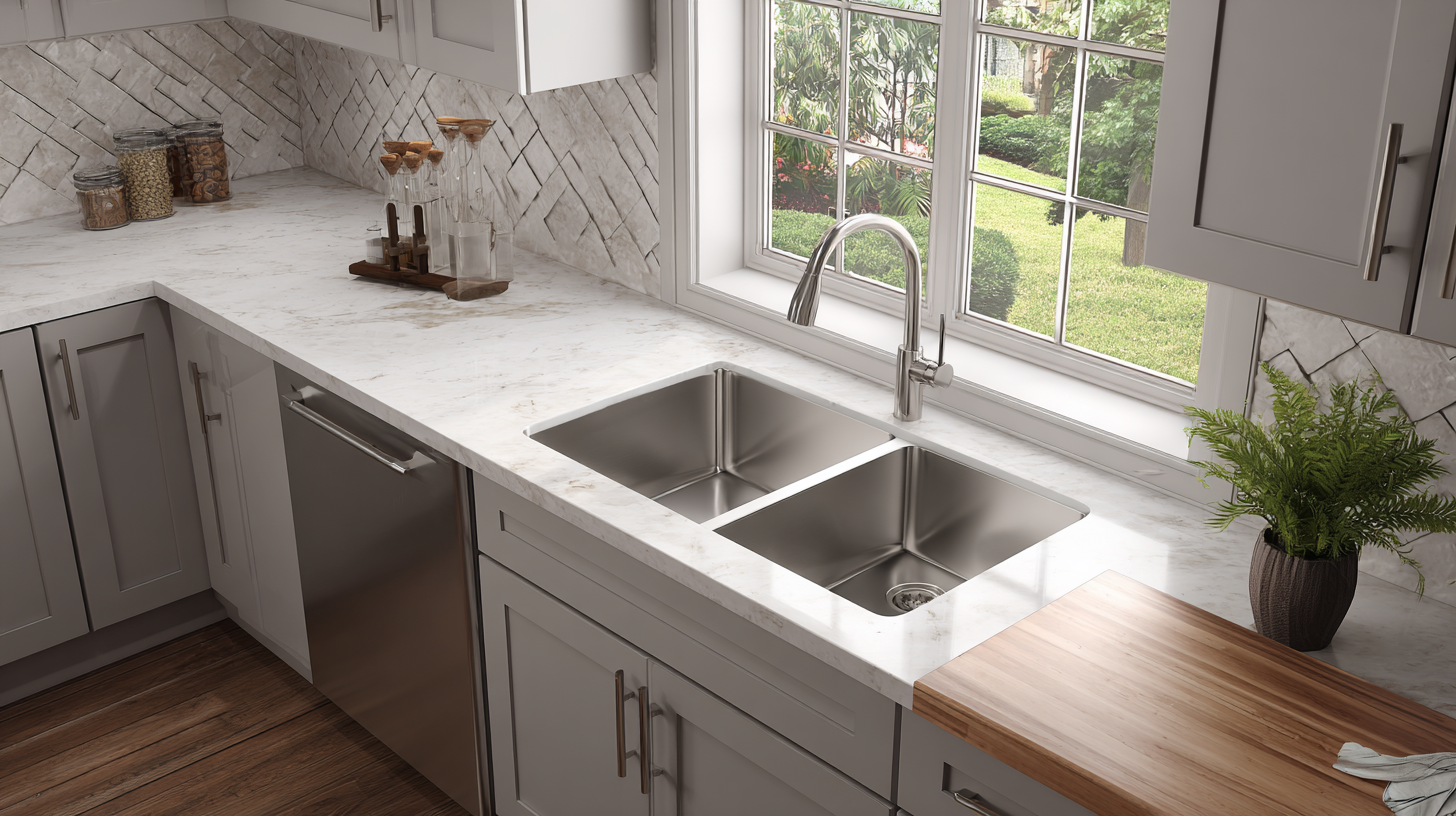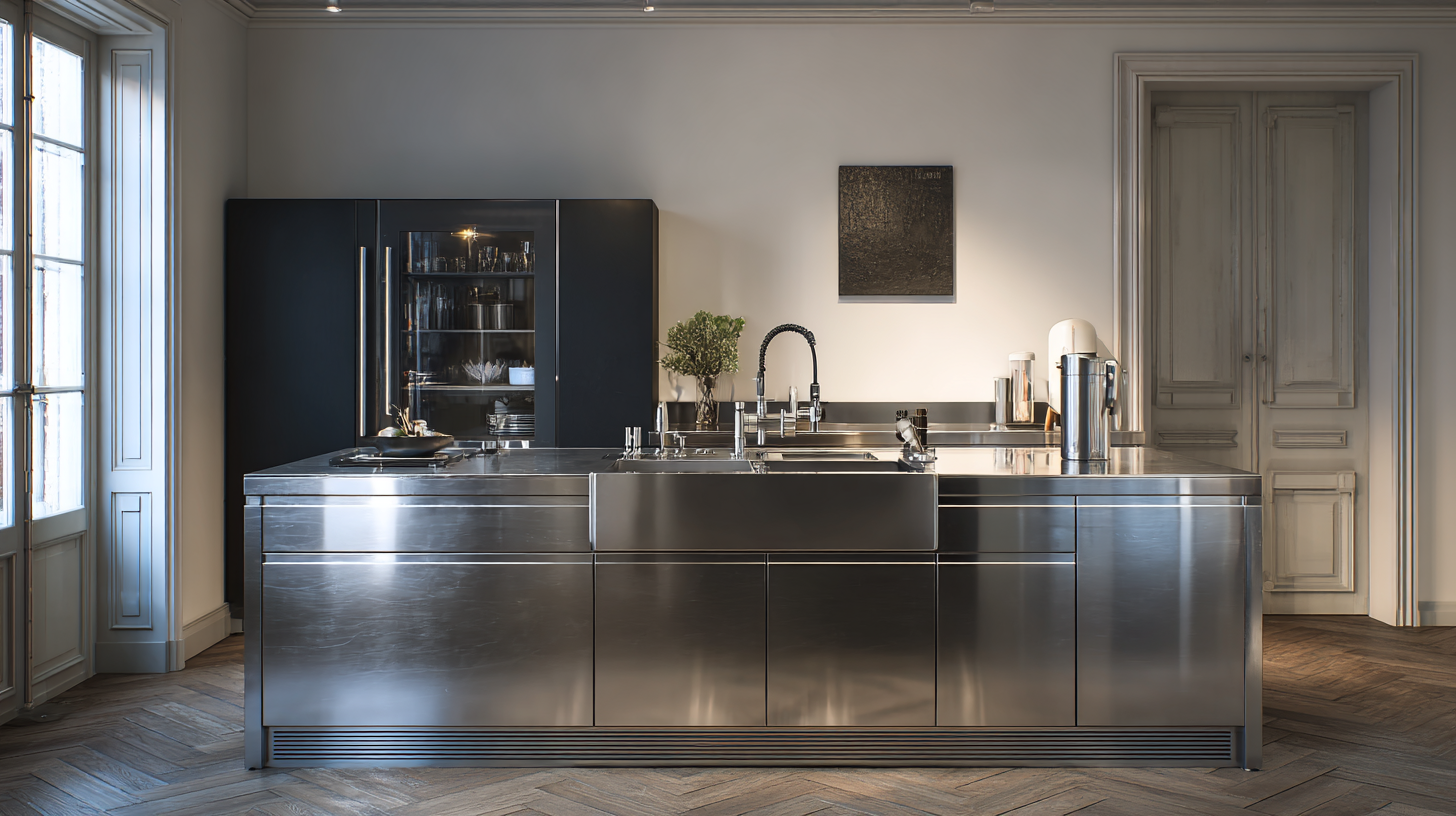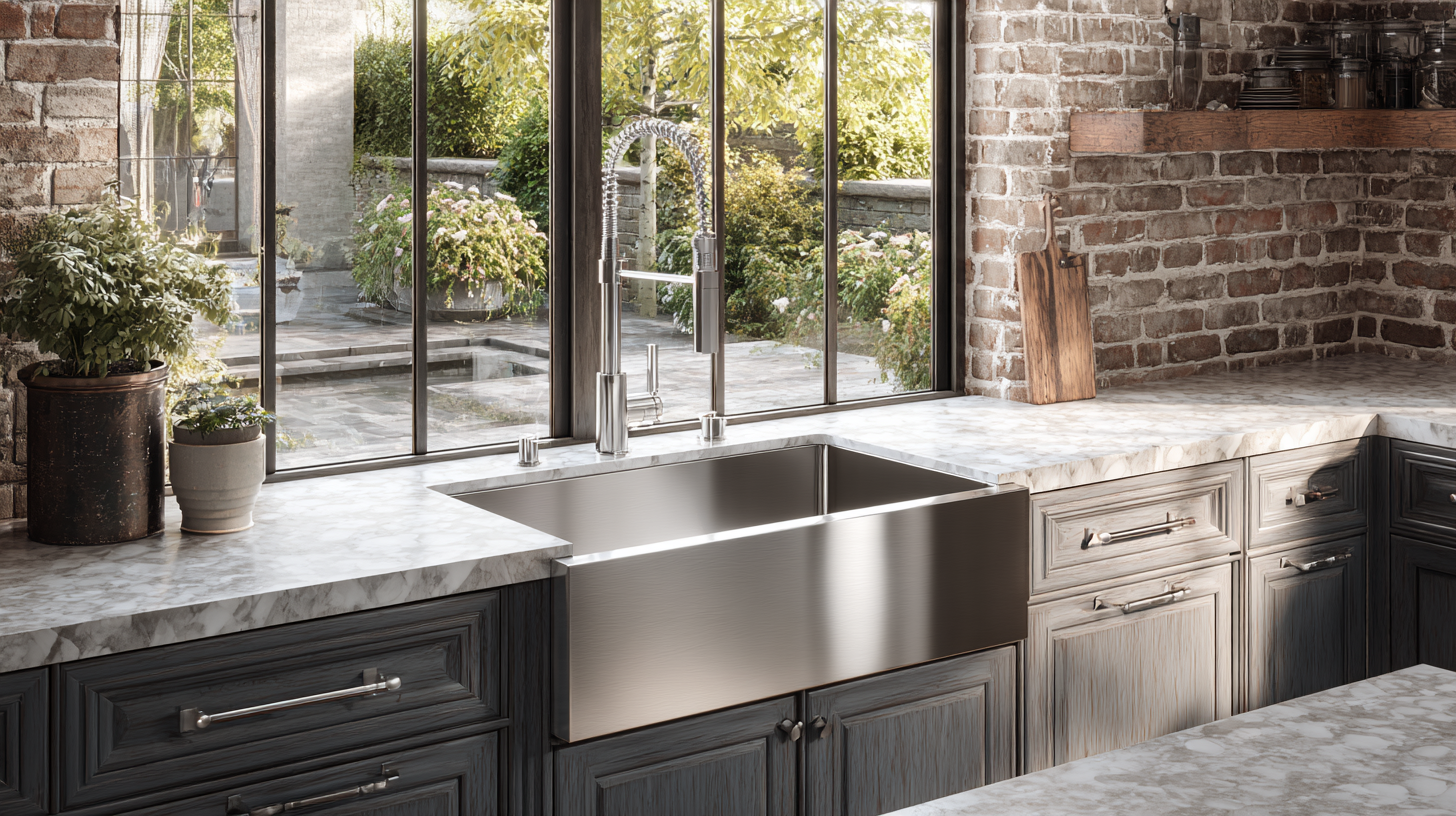The market for stainless steel kitchen and bathroom sinks is expected to witness significant transformations driven by innovative technologies by 2025. Recent industry reports indicate that the global sink market is projected to grow at a CAGR of 4.5%, reaching a valuation of approximately $5 billion. This growth is largely attributed to consumer preferences for durable, aesthetically pleasing, and easy-to-maintain products, with stainless steel emerging as a top choice due to its resistance to corrosion and bacteria.
 Additionally, advancements in manufacturing techniques, such as laser cutting and precision stamping, are enabling the production of sinks with enhanced functionality and design flexibility. As sustainability becomes a primary concern for consumers and manufacturers alike, eco-friendly manufacturing processes and recyclable materials are likely to play a crucial role in shaping the future of stainless steel kitchen and bathroom sinks. This blog will explore the innovative technologies and trends that are poised to redefine this vital market segment.
Additionally, advancements in manufacturing techniques, such as laser cutting and precision stamping, are enabling the production of sinks with enhanced functionality and design flexibility. As sustainability becomes a primary concern for consumers and manufacturers alike, eco-friendly manufacturing processes and recyclable materials are likely to play a crucial role in shaping the future of stainless steel kitchen and bathroom sinks. This blog will explore the innovative technologies and trends that are poised to redefine this vital market segment.
The durability of stainless steel kitchen and bathroom sinks is undergoing a transformative shift thanks to innovative materials and technologies emerging in the industry. According to a recent report by Research and Markets, the global sink market is expected to grow by 4.5% annually through 2025, driven by advancements in material engineering. New alloys and coatings are being developed that enhance the corrosion resistance and strength of stainless steel, making sinks not only more resilient but also more aesthetically pleasing.
Emerging materials like titanium-infused stainless steel are setting new standards for durability. This combination offers superior strength while retaining the lightweight properties of traditional stainless steel. As reported by the Kitchen and Bath Association, approximately 70% of homeowners prioritize durability when selecting kitchen fixtures, highlighting the industry's shift towards more robust materials. Additionally, the introduction of anti-bacterial coatings further increases the lifespan and hygiene of stainless steel sinks, crucial features for modern households focusing on health and wellness. With these advancements, the future of stainless steel sinks looks remarkably promising, embodying both resilience and practicality in home design.
As we move towards 2025, the integration of smart technology into stainless steel kitchen and bathroom sinks is set to revolutionize our daily routines. Imagine a sink that can detect water quality, adjust temperatures automatically, or even communicate with other smart appliances in your home. Such advancements not only enhance convenience but also promote a more efficient and sustainable use of resources.
Tip 1: When selecting a smart sink, look for options that offer touchless controls and automated cleaning features. These technologies can significantly reduce water waste and improve hygiene in your kitchen and bathroom.
Furthermore, the development of app-controlled sinks is becoming increasingly popular. Homeowners can monitor water usage, set alerts for leaks, and access maintenance reminders directly from their smartphones. This level of integration allows for proactive management of your plumbing systems and contributes to an eco-friendlier home.
Tip 2: Consider investing in energy-efficient models that not only integrate smart technology but also use less water and energy. These sinks often feature LED indicators for water usage and temperature, facilitating better decision-making while cooking or preparing for daily rituals.
| Feature | Technology | Benefits | Expected Adoption by 2025 |
|---|---|---|---|
| Touchless Controls | Infrared Sensors | Improved hygiene, reduced water usage | High |
| Smart Water Management | IoT Integration | Leak detection, automated water usage tracking | Medium |
| Built-in Filtration Systems | Advanced Filters | Access to clean water, less need for plastic bottles | High |
| Customization Options | 3D Printing Technology | Personalized designs, unique sink shapes | Medium |
| Integrated Lighting | LED Technology | Enhanced visibility, aesthetic appeal | Low |
The production of stainless steel sinks is increasingly influenced by sustainability trends. As consumers become more environmentally conscious, manufacturers are adopting practices that reduce waste and improve the lifecycle of their products. Innovative techniques, such as using recycled stainless steel and implementing energy-efficient manufacturing processes, are now at the forefront of sink production. These changes not only reduce the carbon footprint associated with production but also ensure that the final products are durable and recyclable, minimizing their impact on landfills.
Additionally, sustainable sourcing of raw materials has become a focus area for many companies. By prioritizing materials that are responsibly extracted, manufacturers can produce sinks that meet the growing demand for eco-friendly products without compromising quality. Collaborations with suppliers who practice ethical sourcing help foster a transparent supply chain, further enhancing the sustainability narrative. As we move towards 2025, it is clear that the stainless steel sink industry will continue to embrace these trends, paving the way for innovative designs that are not just stylish, but also environmentally responsible.
Customization options are becoming pivotal in the design of stainless steel kitchen and bathroom sinks, as showcased at KBIS 2025. With advancements in technology intertwining with innovative design, consumers are increasingly seeking sinks that reflect their personal style while providing functional excellence. This shift towards bespoke solutions means that manufacturers are now embracing generative design techniques, creating unique, user-centered products that cater to both aesthetics and utility. The emergence of AI-driven design processes has opened up endless possibilities for customization, allowing for tailored dimensions, finishes, and configurations.
As we move toward 2025, the influence of wellness technology both in kitchens and bathrooms cannot be overlooked. Integrated technologies are enhancing user experience, ensuring that these spaces not only serve practical purposes but also promote well-being. The incorporation of elements like smart drainage systems, self-cleaning surfaces, and even mood-enhancing colors are redefining what consumers expect from their sinks. By emphasizing customization and technological integration, the industry is poised to offer innovative solutions that meet the evolving demands of modern lifestyles, merging classic elegance with contemporary functionality.

Traditional stainless steel sinks have long been favored for their durability and sleek appearance, but they also come with a set of common issues that many homeowners face. One significant concern is the noise generated during use; the metal surface can amplify sound, making washing dishes or food prep quite noisy. Innovative technologies are now being developed to address this problem through sound-dampening materials and design enhancements that minimize vibrations, ensuring a quieter kitchen environment.
Another issue with traditional sinks is the susceptibility to scratches and stains, which can diminish their aesthetic appeal over time. However, advancements in surface treatments and finishes are emerging that make stainless steel sinks more resistant to both minor scratches and harsh stains. These innovations not only help maintain the sink’s original appearance but also improve longevity and ease of cleaning. By focusing on these frequent pain points, the future of stainless steel sinks promises to deliver solutions that enhance user experience while retaining the classic benefits of this timeless material.

